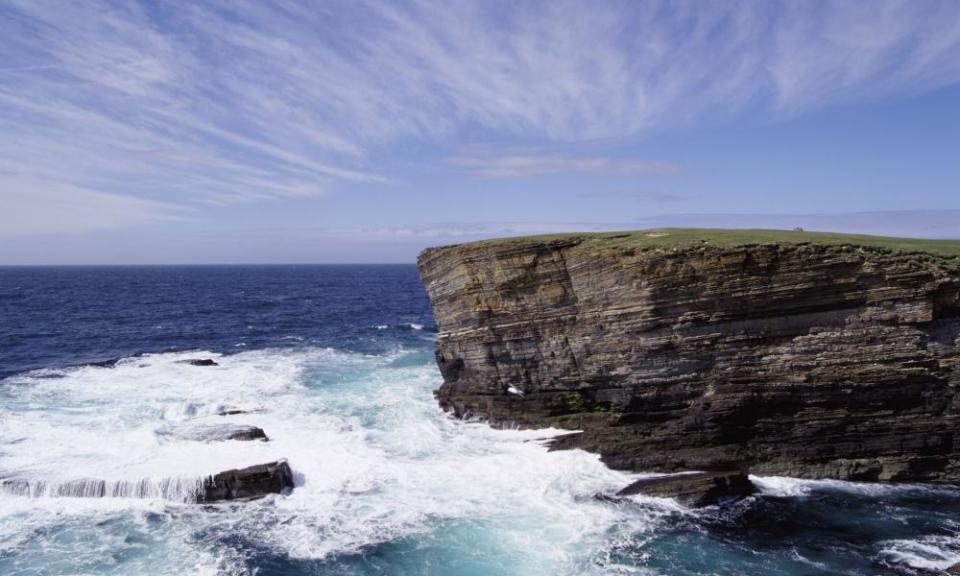Country diary: A rare floral resident on the cliffs

The Yesnaby cliffs, where waves dash themselves against rock, are also home to quieter natural delights. Turning one’s back to the drama of the sea, one can find – in an otherwise unremarkable patch of boggy ground – an outpost of one of Orkney’s rarest floral residents: the Scottish primrose. It’s a minutely detailed little wildflower, with heart-shaped petals of mauve and gold. The whole plant, roots and all, could fit inside a teacup.
Scottish primroses grow only in a few remote spots along the north coast of Scotland. Finding them is a matter of local knowledge. Earlier this summer, I found this colony after following very specific instructions to park in a particular passing place, and take so many steps south. A treasure hunt, with this tiny posy as my prize. Then I came to admire their first flowering. Now I hope to catch the final inflorescence of the year.

Summer came late this year to Orkney. While the south sweltered through heatwaves, we were lucky if the thermometer hit the late teens. July passed in a haze of rain and grey skies; August finally brought some sun. The flowers are running behind too: I spy the last pompom heads of thrift bobbing on the sea breeze, a few bright glints of hawkweed.
Local people have been keeping track of the little primroses, posting updates online. Going, going, not quite gone … the last hardy outliers have hung on right into mid-September. So here I am, as the weather turns, desperate for a last glimpse of what little summer we’ve had.
I heard that there was one left just yesterday. Where can it be? I scour the ground, smooth in places, where peaty water has evaporated. Along this miniature coastline, a series of small, fleshy little rosettes of green: primrose leaves, arrayed starlike around a central point. If I bring my cheek to the earth, I can study the fragile central stalk from which seed pods now hang like lanterns.
Where’s that final flower? And then I find it, or what must have been it: heads hanging low, last frail petals frizzling away to nothing. It’s over. Soon the standing pools will refill, the season of mud and saltspray will return. Still, it was nice while it lasted.
• Country Diary is on Twitter at @gdncountrydiary

 Yahoo Movies
Yahoo Movies 
